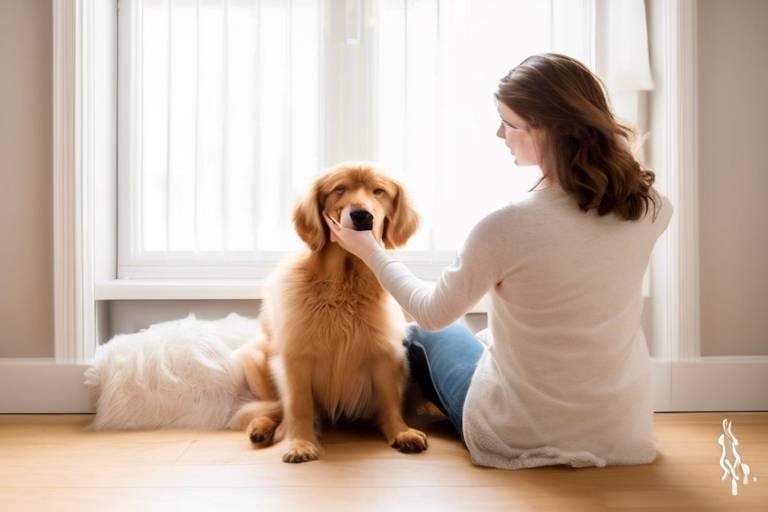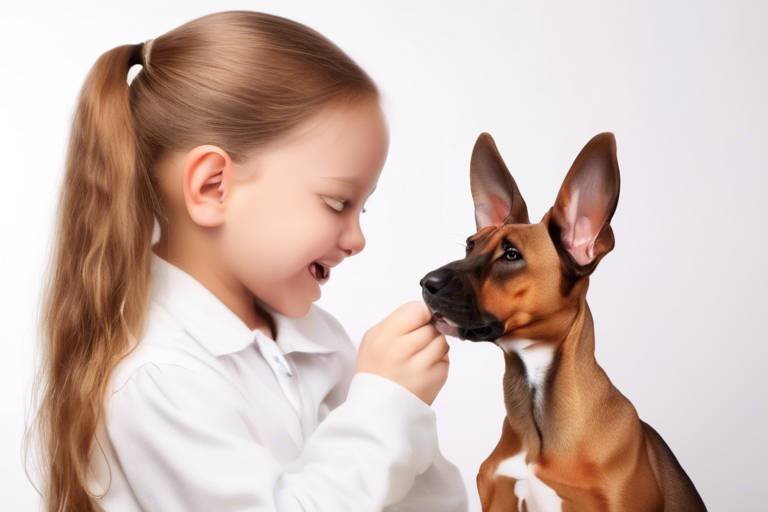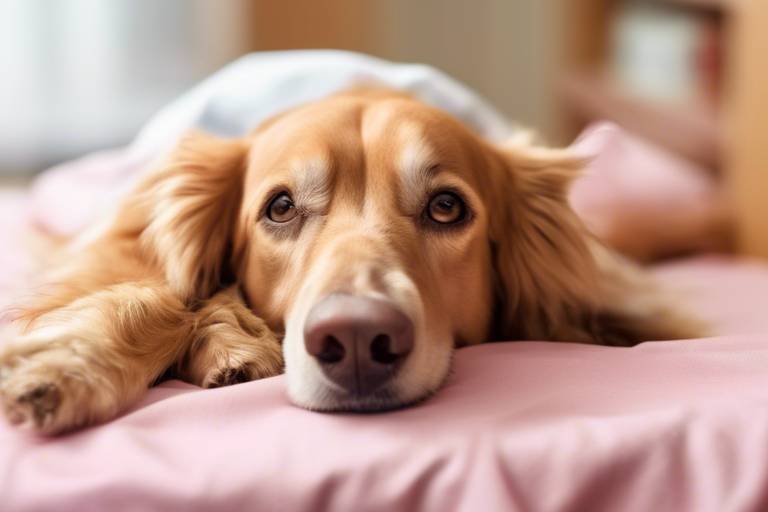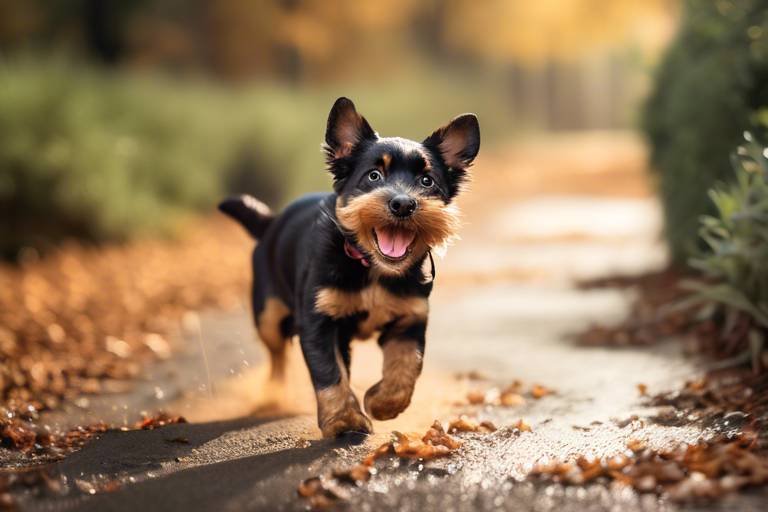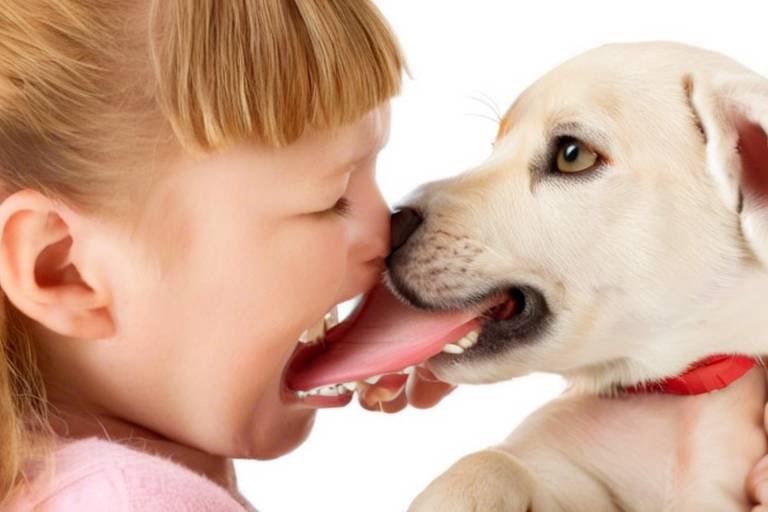Tips for Reducing Your Pet’s Anxiety at Home
Are you noticing your furry friend acting a bit more anxious than usual? You're not alone! Many pet owners face the challenge of managing their pets' anxiety, and it can be heartbreaking to see our beloved companions in distress. This article provides practical strategies to help pet owners create a calming environment for their pets, minimizing anxiety and promoting overall well-being through various techniques and approaches. By understanding your pet’s needs and applying some simple methods, you can turn your home into a sanctuary where your pet feels safe and relaxed.
Recognizing the signs of anxiety in pets is crucial. Just like humans, animals experience stress and anxiety, and it often manifests in various behaviors. Common signs include excessive barking, destructive chewing, hiding, or even changes in eating habits. It's essential to pay attention to these signals, as they can indicate that something is bothering your pet. Additionally, identifying triggers in your pet's environment can be a game-changer. Is it loud noises, unfamiliar visitors, or perhaps being left alone for too long? Understanding what causes your pet's anxiety is the first step towards alleviating it.
Designing a comfortable and secure area for your pet can significantly reduce anxiety. Think of this space as your pet's personal sanctuary—a place where they can retreat and feel safe. To set up a safe haven, consider using familiar items such as their favorite blanket or bed, along with some toys that bring them comfort. Calming scents, like lavender or chamomile, can also enhance the relaxation effect. You might even create a cozy corner in your living room or a quiet room where they can escape when feeling overwhelmed. The goal is to make this space inviting and familiar, so your pet knows it's a safe retreat.
There are various products available to help soothe anxious pets. From calming collars that release pheromones to sprays that can be applied to their bedding, these tools can provide significant relief. Anxiety wraps, which apply gentle pressure to your pet's body, can also create a feeling of security. When choosing these products, consider your pet's specific needs and consult with your veterinarian for recommendations. Remember, what works for one pet may not work for another, so it's essential to find the right solution for your furry friend.
If you're looking for alternatives, exploring natural remedies like herbal supplements and essential oils can provide additional support for anxious pets. Some effective options include valerian root, passionflower, and CBD oil, which have been known to help calm nerves. When using essential oils, ensure they are pet-safe and properly diluted. It's always a good idea to consult with a veterinarian before introducing any new supplements or oils to your pet's routine, as they can help guide you on the best practices for application and dosage.
Implementing behavioral techniques such as desensitization and counter-conditioning can help pets manage anxiety. These methods involve gradually exposing your pet to their triggers in a controlled manner while rewarding them for calm behavior. This approach can take time, but with patience and consistency, you can teach your pet effective coping strategies. For instance, if your pet is anxious about loud noises, you might play recordings of those sounds at a low volume while providing treats and praise. Over time, this can help them associate the noise with positive experiences.
Establishing a consistent routine can provide comfort to anxious pets. Just like us, pets thrive on predictability! Regular feeding times, exercise, and playtime create a sense of stability that can ease anxiety. Consider setting a daily schedule that includes walks, play sessions, and quiet time. This structure not only benefits your pet's mental health but can also strengthen your bond with them. When pets know what to expect, they feel more secure and less anxious.
Regular physical activity and mental challenges are essential for reducing anxiety. Engaging your pet in various activities can help burn off excess energy and keep their minds stimulated. Think of it as a workout for their brain and body! Activities like fetch, agility training, or even puzzle toys can provide both physical and mental stimulation. Not only does this help alleviate stress, but it also prevents boredom, which can lead to destructive behaviors.
Using interactive toys can help distract and entertain anxious pets. These toys are designed to engage your pet's mind and keep them occupied, which is especially beneficial during stressful situations. Look for toys that dispense treats or require problem-solving skills. Not only will they keep your pet busy, but they also provide a rewarding experience that can boost their confidence and reduce anxiety levels.
Encouraging positive social interactions with other pets and people can help reduce anxiety. Gradual introductions to new experiences and environments can make a world of difference for your pet. Whether it's a playdate with a friendly dog or a visit to a pet-friendly café, these experiences can help your pet build confidence. Just be sure to monitor their comfort level and take things at their pace. Remember, every pet is unique, and some may require more time than others to adjust to new situations.
- What are the signs of anxiety in pets? Look for behaviors like excessive barking, destructive chewing, hiding, or changes in eating habits.
- How can I create a safe space for my pet? Use familiar items, calming scents, and a quiet area where your pet can retreat when feeling anxious.
- Are there natural remedies for pet anxiety? Yes, options like valerian root, passionflower, and CBD oil can help calm anxious pets.
- How can I help my pet with socialization? Gradually introduce them to new experiences, ensuring they feel comfortable at their own pace.

Understanding Pet Anxiety
Recognizing the signs of anxiety in your furry friends is crucial for their well-being. Just like humans, pets can experience a range of emotions, and anxiety is one of the most common issues they face. Imagine your pet as a tiny ball of nerves, feeling overwhelmed by the world around them. You might notice them acting differently, and understanding these changes can help you provide the support they need.
Some common behaviors that indicate anxiety in pets include:
- Excessive barking or meowing: This could be a sign that your pet is feeling stressed or threatened.
- Destructive behavior: Chewing furniture or scratching walls often stems from anxiety, especially when left alone.
- Hiding: If your pet suddenly seeks refuge under the bed or in a closet, it’s a clear indication that they are feeling anxious.
- Changes in appetite: A sudden loss of interest in food or treats can signal that something is off.
Identifying triggers in your pet's environment is equally important. These triggers can vary widely from one pet to another. For example, loud noises such as thunder, fireworks, or even the vacuum cleaner can send some pets into a tailspin of anxiety. Other pets might feel anxious when they are separated from their owners or when they encounter unfamiliar people or animals.
To help you understand your pet better, consider keeping a journal of their behaviors and the situations that seem to trigger their anxiety. This can provide valuable insights into what makes them tick. By recognizing these patterns, you can develop strategies to help your pet feel more secure and relaxed.
It's essential to remember that just like humans, pets can have varying levels of anxiety. Some may only experience mild stress, while others might struggle with severe anxiety that affects their quality of life. The key is to observe and respond to your pet’s needs with compassion and care. After all, they rely on you to create a safe and loving environment.
In conclusion, understanding pet anxiety is the first step toward helping your furry friend feel more at ease. By recognizing the signs and identifying triggers, you can take proactive measures to support your pet's emotional health. Remember, a calm pet is a happy pet!
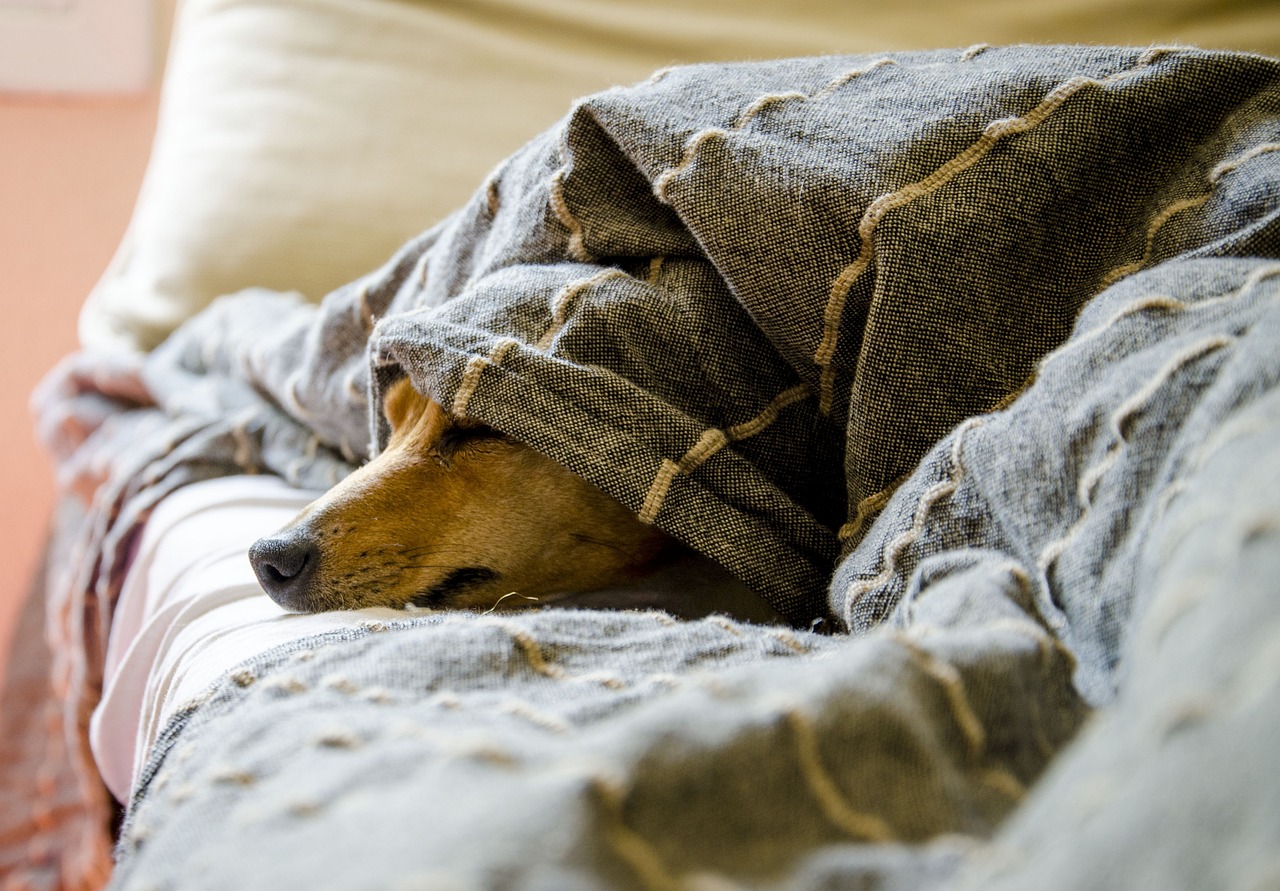
Creating a Safe Space
Creating a safe space for your pet is one of the most effective ways to help them cope with anxiety. Just like we all need a cozy nook to retreat to when life gets overwhelming, pets also benefit from having their own sanctuary. This space should be a haven where they can feel secure and relaxed, away from the hustle and bustle of daily life. So, how do you go about crafting this perfect little refuge for your furry friend?
Start by choosing a quiet area in your home that is away from loud noises and frequent foot traffic. This could be a corner of your living room, a cozy nook in your bedroom, or even a designated room where your pet can chill out. Make sure this space is easily accessible for your pet, so they can retreat there whenever they feel stressed. You can enhance this safe zone by incorporating familiar items that hold sentimental value for your pet, such as their favorite blanket, toys, or even an old piece of your clothing. These items can provide a sense of comfort and familiarity, much like a child cuddling with a beloved stuffed animal.
Next, consider the sensory aspects of this safe space. Pets are highly sensitive to their surroundings, so creating a calming atmosphere is key. You might want to use calming scents, such as lavender or chamomile, which can be soothing for pets. You can achieve this by using essential oil diffusers or placing a few drops on their bedding (just be sure to use pet-safe oils!). Additionally, dim lighting can create a tranquil environment, so consider using soft lamps or even fairy lights to set the mood. The goal is to create a space that feels safe and comforting, almost like a warm hug.
Another important aspect is to ensure that the space is free from any potential hazards. Check for any small items that your pet could swallow, or cords that they could get tangled in. Safety is paramount, and a clutter-free environment will help your pet feel more at ease. If your pet enjoys privacy, consider adding a pet tent or a covered bed where they can snuggle in and feel hidden away from the world.
Lastly, remember that consistency is crucial. Once you’ve set up this safe space, encourage your pet to use it regularly. You can do this by rewarding them with treats or praise when they choose to relax there. Over time, they will associate this area with safety and comfort, making it a go-to spot for them during stressful moments. In essence, creating a safe space is not just about physical comfort; it’s about fostering a sense of security and peace for your beloved companion.
Incorporating Calming Products
When it comes to easing your pet's anxiety, calming products can be a game changer. Just like we might turn to a cozy blanket or a soothing playlist during stressful times, our furry friends can benefit from similar comforts. There’s a whole world of products designed specifically to help our pets feel more at ease. But how do you know which ones to choose? Let's dive into some popular options and how they can help.
One of the most popular choices among pet owners is the calming collar. These collars are infused with natural ingredients, such as pheromones, that mimic the comforting scents produced by mother animals. By wearing one, your pet may feel a sense of security and calm, especially in stressful situations like thunderstorms or fireworks. Just imagine how comforting it is to have a hug when you're feeling anxious—this is like a hug for your pet!
Another effective option is calming sprays. These sprays can be applied to your pet's bedding or in their favorite resting spots. They work similarly to calming collars, releasing soothing scents that can help reduce anxiety. It's a quick and easy way to create a serene environment. Just a spritz can turn a chaotic day into a peaceful evening, making it easier for your pet to relax.
For those particularly anxious pets, anxiety wraps can work wonders. These wraps apply gentle pressure to your pet’s body, similar to swaddling a baby. This pressure can help to calm their nervous system, making them feel more secure. Think of it as a warm embrace that can help them navigate their fears. Many pet owners have found that their pets respond positively to these wraps, often settling down much faster than before.
While these products can be incredibly helpful, it's essential to remember that not every pet will respond the same way. Some may find relief with just one product, while others might need a combination of several. Experimentation is key! Keep an eye on your pet's behavior and adjust accordingly. If one product doesn’t seem to work, don’t hesitate to try another.
In addition to these products, consider combining them with natural remedies. Herbal supplements and essential oils can provide additional support. For instance, lavender and chamomile are known for their calming properties. You can use a diffuser in your home or apply diluted essential oils to their bedding, creating a tranquil atmosphere that encourages relaxation.
In summary, incorporating calming products into your pet's routine can significantly reduce anxiety levels. Whether it's a collar, spray, wrap, or natural remedy, these tools can help your beloved companion feel more secure and at ease. Just remember to be patient and observant as you find the right combination that works for them. After all, creating a calm environment is a journey, not a race!
- What are calming collars and how do they work? Calming collars release pheromones that mimic the comforting scents produced by mother animals, helping to soothe anxious pets.
- Can I use calming sprays on my pet? Yes, calming sprays can be applied to your pet's bedding or favorite spots to promote relaxation.
- Are anxiety wraps effective for all pets? While many pets benefit from anxiety wraps, individual responses may vary, so it's important to monitor your pet's reactions.
- What natural remedies can I use for my pet's anxiety? Herbal supplements like lavender and chamomile, as well as essential oils, can be effective in promoting calmness.
Natural Remedies
When it comes to soothing your anxious pet, can be a game-changer. Many pet owners are turning to these gentle alternatives to help their furry friends feel more at ease without resorting to pharmaceuticals. Just like how some people prefer herbal teas over strong medications, pets can benefit from the calming properties of nature too!
One popular option is herbal supplements, which can be found in various forms, including treats, powders, and capsules. Ingredients such as chamomile, lavender, and valerian root are known for their calming effects. These herbs can be particularly effective when given regularly, as they help build a sense of tranquility over time. Always consult with your veterinarian before introducing any new supplement to ensure it’s appropriate for your pet’s specific needs.
Another fantastic natural remedy is the use of essential oils. Oils like lavender and chamomile can create a calming atmosphere when diffused in your home. However, it’s essential to use them safely, as some oils can be toxic to pets. Always dilute essential oils and ensure proper ventilation. A few drops on a cotton ball placed in the corner of your pet’s safe space can work wonders, creating a soothing environment that encourages relaxation.
To make things even easier, here’s a quick comparison table of popular natural remedies:
| Natural Remedy | Form | Benefits |
|---|---|---|
| Chamomile | Tea, Capsules | Calms nerves, aids sleep |
| Lavender | Essential Oil, Spray | Reduces anxiety, promotes relaxation |
| Valerian Root | Capsules, Treats | Helps with agitation, improves sleep quality |
In addition to these remedies, creating a calming routine can also support your pet’s emotional well-being. Incorporating short, daily sessions of gentle massage or soothing music can enhance the effects of these natural remedies. Think of it as creating a spa day for your pet—who wouldn’t feel better after a little pampering?
Remember, while natural remedies can be incredibly effective, they work best as part of a holistic approach to managing anxiety. Regular vet check-ups, behavioral training, and a safe environment all play significant roles in your pet’s overall happiness. By combining these elements, you can create a nurturing space that helps your furry companion thrive.
Behavioral Techniques
When it comes to helping our furry friends cope with anxiety, can be incredibly effective. Think of it as teaching your pet a new skill or trick; it requires patience, consistency, and a sprinkle of love. One of the most powerful methods is desensitization. This technique involves gradually exposing your pet to the source of their anxiety in a controlled manner. For instance, if your dog gets anxious during thunderstorms, you might start by playing a recording of thunder at a very low volume while providing treats and praise. Over time, you can gradually increase the volume as your pet becomes more comfortable.
Another useful strategy is counter-conditioning. This is all about changing your pet's emotional response to a specific trigger. Let’s say your cat gets anxious when strangers come over. You can help them associate the presence of guests with something positive, like their favorite treat or toy. Whenever someone arrives, you can give your cat a treat, helping them to link visitors with a fun experience rather than stress.
It's also important to recognize that every pet is unique, and what works for one might not work for another. Therefore, it’s vital to observe your pet's reactions and adjust your approach accordingly. Here are some additional tips to enhance your behavioral techniques:
- Stay Calm: Your pets can sense your emotions. If you’re anxious or frustrated, it can make their anxiety worse.
- Use Positive Reinforcement: Reward your pet for calm behavior. This will encourage them to repeat those behaviors.
- Be Consistent: Consistency is key. Make sure everyone in your household follows the same techniques to avoid confusing your pet.
Incorporating these techniques into your routine can help your pet build resilience against anxiety over time. Remember, it’s not a quick fix; it’s a journey. With patience and dedication, you can help your pet navigate their fears and enjoy a more relaxed life.
Q: How long does it take to see results from behavioral techniques?
A: The timeline can vary greatly depending on the individual pet and the severity of their anxiety. Some pets may show improvement within a few weeks, while others may take several months. Consistency and patience are key!
Q: Can I use these techniques on my own, or should I consult a professional?
A: While many pet owners successfully implement these techniques on their own, consulting a professional animal behaviorist can provide tailored advice and support, especially for severe anxiety cases.
Q: Are there any risks associated with desensitization and counter-conditioning?
A: If done incorrectly, these techniques can potentially exacerbate anxiety. It's essential to proceed slowly and carefully, ensuring your pet remains comfortable throughout the process.
Routine and Structure
Establishing a consistent routine is like creating a comforting rhythm in your pet's life. Just think about it: when you wake up every day at the same time, eat breakfast, and head out for work, it provides a sense of normalcy and predictability. Pets thrive on this same principle! They find comfort in knowing what to expect, and that can significantly reduce their anxiety levels. A structured routine helps them feel secure and grounded, allowing them to navigate their world with less stress.
So, what does a daily routine for your pet look like? It’s not just about feeding times; it encompasses various aspects of their day-to-day life. Here are some key elements to consider:
- Regular Feeding Times: Consistency in meal times helps your pet anticipate when they will eat, reducing anxiety around food availability.
- Scheduled Exercise: Daily walks or play sessions not only help burn off excess energy but also provide mental stimulation, which is crucial for a well-rounded, happy pet.
- Playtime: Make sure to set aside time for interactive play. This not only strengthens your bond but also helps your pet unwind and relax.
- Quiet Time: Just like humans, pets need downtime. Creating a calm environment during certain parts of the day can help them feel safe and secure.
By sticking to a routine, you can help your pet understand what to expect throughout the day. For instance, if your dog knows that a walk follows breakfast, they will feel more at ease knowing that their needs will be met in a timely manner. Similarly, cats can benefit from having scheduled playtimes, which can reduce their anxiety and keep them engaged.
In addition to these daily activities, consider using a visual schedule to help your pet understand their routine better. While they may not read like we do, pets can pick up on visual cues. For instance, you could use colored stickers or a simple chart to indicate different parts of their day. This can be especially effective for dogs who are trained to recognize certain commands or signals.
Ultimately, the goal is to create a sense of stability and predictability in your pet's life. By establishing a structured routine, you provide them with the comfort they need to navigate their environment confidently. Remember, a happy pet is a relaxed pet, and a little routine can go a long way in reducing their anxiety.
Q: How long does it take for a routine to help reduce my pet's anxiety?
A: It can vary from pet to pet, but generally, you may start to see improvements within a few weeks of establishing a consistent routine. Patience and consistency are key!
Q: Can I adjust the routine if my pet seems unhappy with it?
A: Absolutely! It's important to be flexible. Pay attention to your pet's behavior and adjust the routine as needed to ensure they are comfortable and happy.
Q: What if my pet has specific needs that disrupt a standard routine?
A: Every pet is unique, and some may require special accommodations. Take note of their individual needs and try to incorporate those into their routine as best as you can.
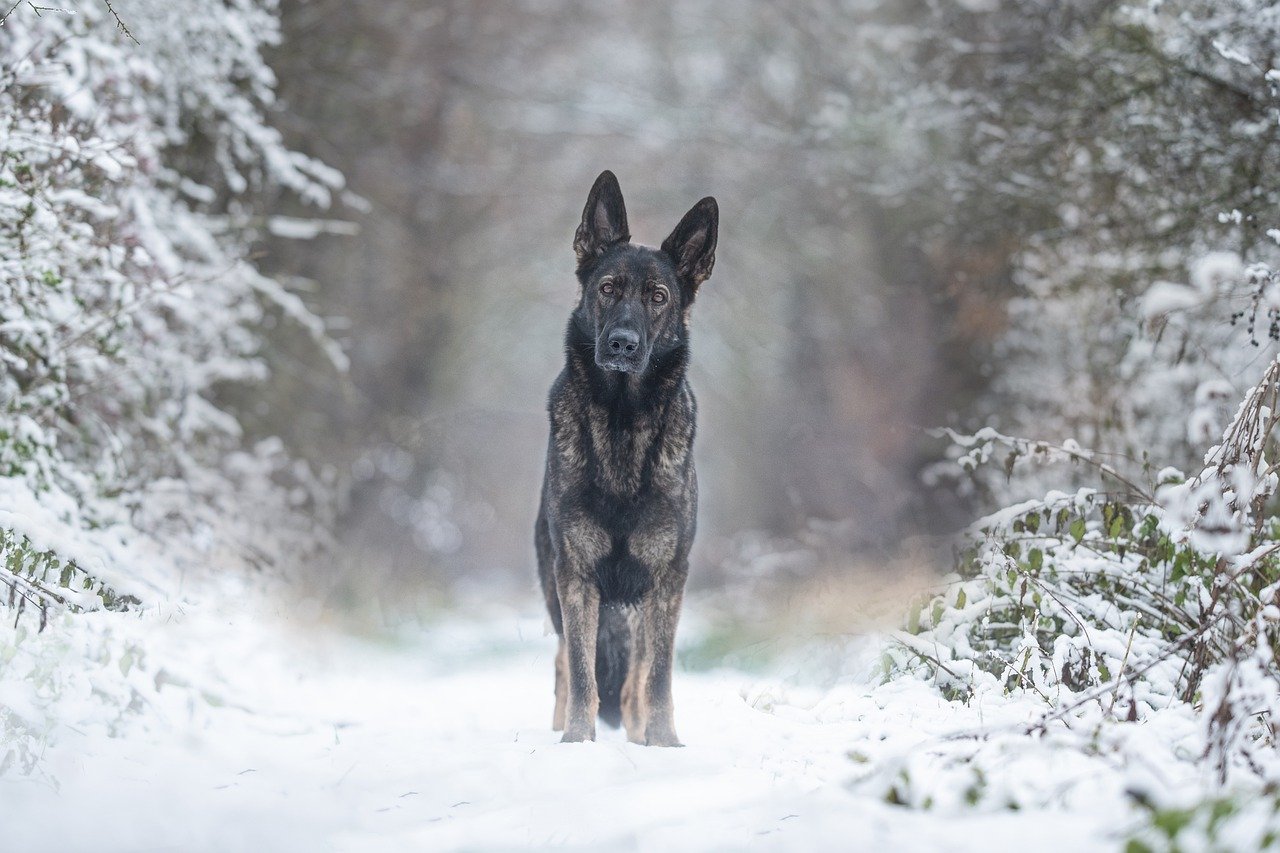
Exercise and Mental Stimulation
When it comes to our furry companions, one of the most effective ways to combat anxiety is through regular exercise and mental stimulation. Think of it this way: just like humans, pets need a good outlet for their energy and a way to keep their minds sharp. A bored pet is often an anxious pet, so providing opportunities for both physical activity and mental challenges can create a more balanced and relaxed animal.
Engaging your pet in daily exercise routines not only helps to burn off excess energy but also releases endorphins, which are natural mood lifters. Whether it’s a brisk walk around the neighborhood, a game of fetch in the backyard, or a fun romp at the dog park, these activities can help to alleviate stress and anxiety. But don't just stop at physical exercise! Incorporating mental challenges is equally important. This can include puzzle toys that encourage your pet to think critically or training sessions that teach new tricks. The combination of physical and mental exercise can work wonders in calming an anxious pet.
Here are some effective ways to ensure your pet gets enough exercise and mental stimulation:
- Daily Walks: Aim for at least 30 minutes of brisk walking each day. This not only provides physical exercise but also exposes your pet to new sights and smells, which can be mentally stimulating.
- Interactive Play: Engage in activities like tug-of-war or fetch. These games are not only fun but also help to strengthen the bond between you and your pet.
- Puzzle Toys: Invest in toys that require your pet to solve a problem to get a treat. This keeps their minds engaged and can reduce feelings of anxiety.
- Training Sessions: Regularly teach your pet new commands or tricks. This not only provides mental stimulation but also reinforces good behavior.
Additionally, consider incorporating socialization opportunities into your pet's routine. Taking your pet to dog parks or arranging playdates with other pets can provide both physical exercise and the chance to learn social skills. Positive interactions with other animals and people can significantly reduce anxiety levels, helping your pet feel more secure and confident in various environments.
Moreover, don't underestimate the power of environmental enrichment. Simple changes like rotating toys, introducing new scents, or even changing the layout of your pet's space can spark curiosity and engagement. Just like us, pets thrive on novelty and variety, and keeping their environment stimulating can help alleviate anxiety.
In conclusion, combining physical exercise with mental challenges is a surefire way to reduce anxiety in your pet. By establishing a routine that incorporates both elements, you can help your furry friend lead a happier, healthier, and more relaxed life.
Q1: How much exercise does my pet need daily?
A1: The amount of exercise varies by breed and age, but most dogs should get at least 30 minutes to 2 hours of exercise each day. Cats also benefit from daily playtime, about 15 to 30 minutes, depending on their energy levels.
Q2: Can mental stimulation be as tiring as physical exercise?
A2: Yes! Mental stimulation can tire pets out just as much as physical activity. Engaging their minds can lead to reduced anxiety and a more relaxed demeanor.
Q3: What are some examples of puzzle toys?
A3: Puzzle toys can include treat-dispensing balls, interactive games where pets have to slide pieces to find treats, and toys that require them to solve a problem to access a reward.
Q4: How can I tell if my pet is anxious?
A4: Signs of anxiety in pets can include excessive barking, destructive behavior, pacing, hiding, or changes in eating habits. If you notice these signs, it’s important to address their needs promptly.
Interactive Toys
When it comes to alleviating your pet's anxiety, can be a game-changer! These engaging gadgets are designed not just for fun, but also to stimulate your pet's mind and keep them occupied, which can significantly reduce feelings of stress and anxiety. Imagine your furry friend, instead of pacing around or hiding under the couch, happily engaged in a puzzle toy that rewards them with treats. It’s like turning their anxious energy into something productive and enjoyable!
There are various types of interactive toys available, each catering to different needs and preferences. For instance, some toys are designed to challenge your pet mentally, requiring them to solve puzzles to retrieve a treat. Others may involve movement, enticing your pet to chase or catch them, which is a fantastic way to release pent-up energy. Here’s a brief overview of popular types of interactive toys:
| Type of Toy | Description | Benefits |
|---|---|---|
| Puzzle Toys | Require pets to solve a challenge to get a reward. | Stimulates mental engagement and reduces boredom. |
| Fetch Toys | Designed for throwing and retrieving games. | Encourages physical activity and bonding time. |
| Treat Dispensers | Release treats as pets play with them. | Motivates play and keeps pets occupied for longer. |
| Interactive Stuffed Animals | Respond to pet's actions with sounds or movements. | Provides entertainment and encourages natural instincts. |
When choosing the right interactive toy, consider your pet's personality and preferences. Some pets may thrive with challenging puzzle toys, while others might prefer something more straightforward, like a treat dispenser. It's essential to observe how your pet interacts with different toys, as this can give you insight into what they enjoy the most. Additionally, rotating toys regularly can keep things fresh and exciting, preventing your pet from losing interest.
Moreover, interactive toys can serve as a fantastic distraction during stressful situations, such as thunderstorms or fireworks. By providing a stimulating outlet for their energy, these toys can help your pet focus on play rather than anxiety-inducing sounds. So next time you notice your pet feeling uneasy, consider reaching for an interactive toy to help ease their mind and promote a sense of calm.
In conclusion, investing in interactive toys is a simple yet effective way to support your pet's mental well-being and reduce anxiety. By engaging their minds and bodies, you’re not just keeping them entertained; you’re also fostering a happier, healthier environment for your beloved furry companion.
1. How do interactive toys help reduce pet anxiety?
Interactive toys engage your pet's mind and body, redirecting their anxious energy into play and problem-solving, which can reduce stress.
2. What types of interactive toys are best for dogs versus cats?
Dogs often enjoy puzzle toys and fetch toys, while cats may prefer toys that mimic hunting behavior, such as feather wands or laser pointers.
3. How often should I rotate my pet's interactive toys?
Rotating toys every few weeks can keep your pet interested and engaged, preventing boredom and encouraging continued play.
4. Can interactive toys be used for pets with special needs?
Yes! Many interactive toys can be adapted for pets with special needs, providing mental stimulation and engagement tailored to their abilities.
Socialization Opportunities
When it comes to reducing your pet's anxiety, one of the most effective strategies is fostering . Just like humans, pets thrive on interaction, and being exposed to different environments, people, and other animals can significantly help alleviate their stress. Think of it as a mini-vacation for your furry friend; it broadens their horizons and helps them adapt to various situations. But how do you go about this? Let's dive into some practical tips!
First and foremost, start slow. If your pet is particularly anxious, overwhelming them with too many new experiences at once can backfire. Begin with short outings to quiet parks or friends' homes where you know the environment will be controlled. This gradual exposure allows your pet to build confidence and learn to associate new experiences with positive outcomes. You might even consider scheduling playdates with friendly, well-behaved dogs or cats. These interactions can teach your pet how to communicate and play appropriately, which is vital for their emotional development.
Additionally, consider enrolling your pet in training classes or group activities. Many local pet stores and community centers offer classes that not only teach your pet essential skills but also provide opportunities to interact with other pets and their owners. It's a win-win! Your pet gets to learn and socialize, while you get to meet fellow pet lovers. Just remember to choose classes that are designed for pets with anxiety; this ensures a supportive environment that won't overwhelm your furry companion.
Another effective way to enhance socialization is through exposure to different environments. Take your pet on car rides, visit pet-friendly stores, or even explore new walking trails. Each new setting offers a unique sensory experience, which can help your pet become more adaptable and less anxious in unfamiliar situations. For instance, if your dog is used to the same park every day, a new location can be an exciting adventure that stimulates their mind and reduces anxiety. Just be sure to monitor their body language, as signs of stress can indicate it's time to take a step back.
Lastly, don't underestimate the power of positive reinforcement. Whenever your pet successfully interacts with new people or pets, reward them with treats or praise. This reinforces their good behavior and helps them associate socialization with positive feelings. Over time, your pet will learn that new experiences are not to be feared but embraced, making them more resilient and less anxious in the long run.
In summary, socialization opportunities are crucial for helping your pet manage anxiety. By gradually exposing them to new experiences, enrolling them in classes, exploring different environments, and using positive reinforcement, you can create a more confident and relaxed pet. So, grab that leash, head out the door, and watch your pet flourish!
- How can I tell if my pet is anxious? Look for signs such as excessive barking, hiding, destructive behavior, or changes in appetite.
- What should I do if my pet is fearful of other animals? Gradually introduce them to other pets in a controlled environment and consider seeking help from a professional trainer.
- Are there specific breeds that are more prone to anxiety? Yes, some breeds are more sensitive than others, but individual personality plays a significant role as well.
- How long does it take for a pet to adjust to new social situations? It varies by pet; some may adapt quickly, while others may need more time and patience.
Frequently Asked Questions
- What are the common signs of anxiety in pets?
Pets can show anxiety in various ways, including excessive barking, destructive behavior, hiding, or even changes in appetite. You might notice your furry friend trembling, pacing, or being unusually clingy. Recognizing these signs early can help you address their anxiety before it escalates.
- How can I create a safe space for my pet?
Creating a safe space involves setting up a cozy area where your pet feels secure. Use familiar items like their favorite blanket or toys, and consider adding calming scents like lavender. This designated area should be quiet and away from household chaos, giving your pet a retreat when they feel anxious.
- Are there effective calming products for pets?
Absolutely! There are many calming products available, such as anxiety wraps, calming collars, and sprays infused with natural ingredients. These products can help soothe your pet during stressful situations, like thunderstorms or fireworks. Always consult your vet before trying new products to ensure they are safe for your pet.
- What natural remedies can help with pet anxiety?
Natural remedies such as herbal supplements like chamomile or valerian root can be beneficial. Essential oils, when used properly and diluted, can also provide a calming effect. Always check with your veterinarian before introducing any new remedies to ensure they are appropriate for your pet.
- How can I implement behavioral techniques to reduce anxiety?
Behavioral techniques like desensitization and counter-conditioning can be very effective. Start by exposing your pet to their anxiety triggers in a controlled manner, gradually increasing exposure while rewarding calm behavior. This approach helps them associate positive experiences with previously stressful situations.
- Why is routine important for my anxious pet?
Establishing a consistent routine provides structure and predictability, which can be incredibly comforting for anxious pets. Regular feeding times, exercise, and play can help them feel more secure and reduce their overall anxiety levels.
- What types of exercise are best for reducing pet anxiety?
Regular physical activity is key! Activities like daily walks, fetch, or even agility training can help burn off excess energy and reduce anxiety. Additionally, mental stimulation through puzzle toys or training sessions can keep their minds engaged and distracted from stressors.
- How can interactive toys help my anxious pet?
Interactive toys are fantastic for keeping your pet entertained and mentally stimulated. They can distract your pet from anxiety triggers while promoting problem-solving skills. Look for toys that dispense treats or require your pet to engage in play to keep them occupied and relaxed.
- What are safe ways to socialize my anxious pet?
Start small! Introduce your pet to new experiences gradually, ensuring they are comfortable at each step. Arrange playdates with calm, friendly pets, or take them to low-key environments where they can observe without feeling overwhelmed. Positive reinforcement during these interactions can help build their confidence.

